Between them, the duo are liable for graphic novels like Nimona, The Witch Boy, The Woman From The Sea, and Lumberjanes, whilst their tv paintings comprises She-Ra and The Princesses of Energy to The Owl Area. Queer media has cemented them each and every as loved figures on the planet of comics and animation, sporting ahead torches of range that they hope to make use of in lighting fixtures the brightest trail imaginable.
A core a part of progressing queer illustration is unlearning the conduct we advanced as youngsters, engineered to position us in easy packing containers with blank labels. It’s to interrogate and respect in equivalent measure, realizing that it’s nonetheless ok to welcome media that when wronged us, and embody problematic visions of the queer neighborhood that no longer handiest replicate fact, however endeavour to raised it. After I put the way forward for queer illustration to Ostertag and Stevenson, their view is one among loud choice.
“You’ll be able to’t simply put queer characters in immediately tales, however on the identical time, I actually wish to see those self same epic romances and epic adventures as a result of the ones issues completely will paintings in the ones motion pictures with queer characters,” Stevenson says, referencing the likes of Titanic and Sweeney Todd as motion pictures soaking wet in queer subtext, that come from a spot of societal ostracisation and fight that such a lot of LGBTQ+ other folks enjoy. “Queer tales additionally resonate with immediately audiences. Like with Nimona, I’ve observed individuals who don’t relate to being a teenage woman who’re like, ‘I believe like that’s me, I’m all the time having to accomplish as any individual’. With my Dad, I used to be attempting to provide an explanation for the queerness facet of the film to him and the film actually helped us have that dialog. However at a definite level he was once like, ‘So queer way you don’t rather are compatible on the planet, does that imply I’m queer?’ and prefer, yeah, somewhat bit!
“We’ve all the time been right here, our tales have all the time been instructed, a technique or some other,” Ostertag says. “There by no means was once a time when our tales weren’t being instructed, as a result of queer persons are the artists, we’re the tradition makers”
“If that’s what is helping you already know, a large number of other folks really feel like they may be able to’t. Despite the fact that it’s any individual who says I don’t wish to be a mom, I don’t wish to be a robust guy. Cis other folks have the ones struggles as neatly. The ones tales are common, and will also be textually queer and nonetheless be common.”
Ostertag provides, “It’s about recognising that those tales are already so compelling, already so entrenched and loved, and the way can we flip up the dial and switch up the focal point to turn ourselves extra in techniques that may be common however by no means alienating. But in addition, I’m k with making other folks uncomfortable as a result of I wish to see extra butch lesbians, I need extra fats characters, I need extra visibly trans characters, I need extra tremendous femme homosexual males. Like, make people uncomfortable, however we’re similar to striking out and present.”
Many people are petrified of mistaken queer illustration, depicting the messy fact of residing as a queer particular person working out your id and discovering a spot on the planet to belong. It’s by no means easy, gentle, or with out adversity. So who’re we to disclaim those interpretations, or to check out and lovely ourselves up so cisgender heteronormative teams are extra keen to just accept us? Ostertag believes that, “the important thing to tales is appearing the hearts of characters and hanging the viewer inside of their lives”, as a result of without reference to gender, sexuality, race, or anything, human struggles are a common consistent we must all relate to.

Ostertag’s Darkest Evening, firstly launched on Substack within the type of common updates, will likely be revealed in bodily shape by means of Scholastic in 2024. The tale explores mature and queer issues with an unflinching eye, and whilst some distance from specific, in comparison to Ostertag’s different paintings it’s a special beast. Now referred to as The Deep Darkish, it’ll be attention-grabbing to peer how an unlimited scroll webcomic takes on bodily shape.
“It was once a exhausting, actually aggravating procedure turning this endless scroll right into a graphic novel, however I’m if truth be told actually stoked on the way it works,” Ostertag explains. Coming in at 480 pages, The Deep Darkish is a protracted tale, however one with characters and arcs that really feel fitted to digesting over more than one sittings. Adjustments to discussion, storylines, and issues also are made imaginable with the approaching newsletter, permitting additional curation {that a} incessantly up to date webcomic can’t all the time facilitate. Protagonist Mags is a butch lesbian, joined by means of adolescence buddy and trans girl Nessa, as they reunite to piece in combination an historical circle of relatives thriller. It’s any such queer tales each creators wish to see extra of, even supposing it way lighting fixtures the spark themselves.
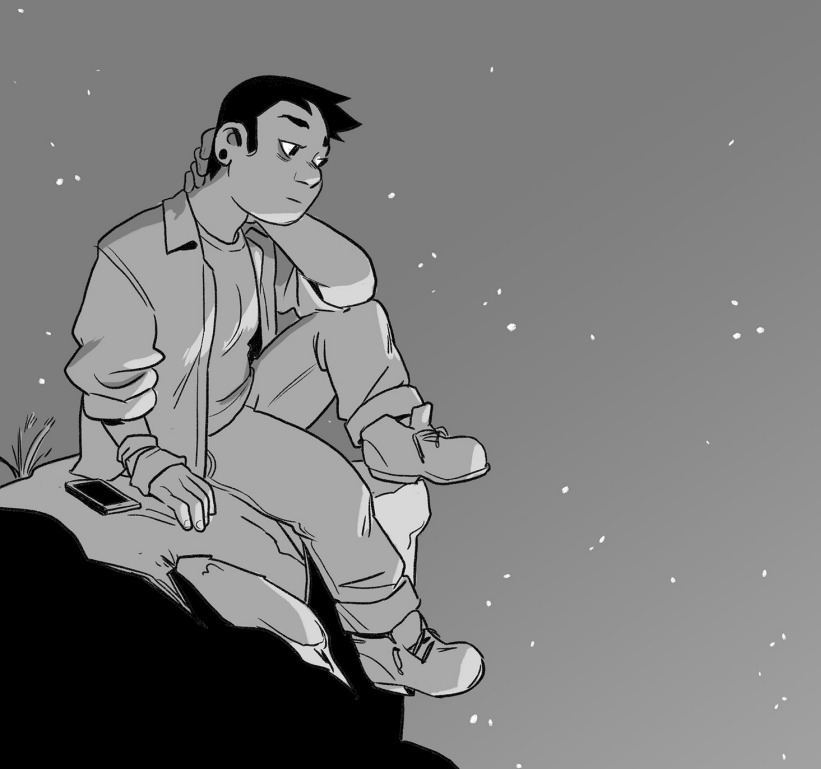
“I no doubt began making it from a spot of frustration,” Ostertag admits. “About getting drained with what I used to be doing and in need of to do one thing else. I’ve drawn such a lot of graphic novels and issues for a ebook structure, and in addition issues that had been made for heart grade or YA, and I’d simply gotten off writing for The Owl Area, which you must write in an excessively explicit approach for animation. I sought after to let unfastened, to make one thing somewhat bit darker and more odd and the place I wasn’t retaining myself again from the contents.”
As for Stevenson, except the massive luck of Nimona on Netflix and the busy time table selling it, he has been toiling away on a brand new mission quickly to wreck duvet. I knew it was once queer and concerned pirates or one thing judging by means of recent Substack illustrations, however ended up permitting them to give an explanation for the remaining since they’re with regards to turning this mission in for the primary time.
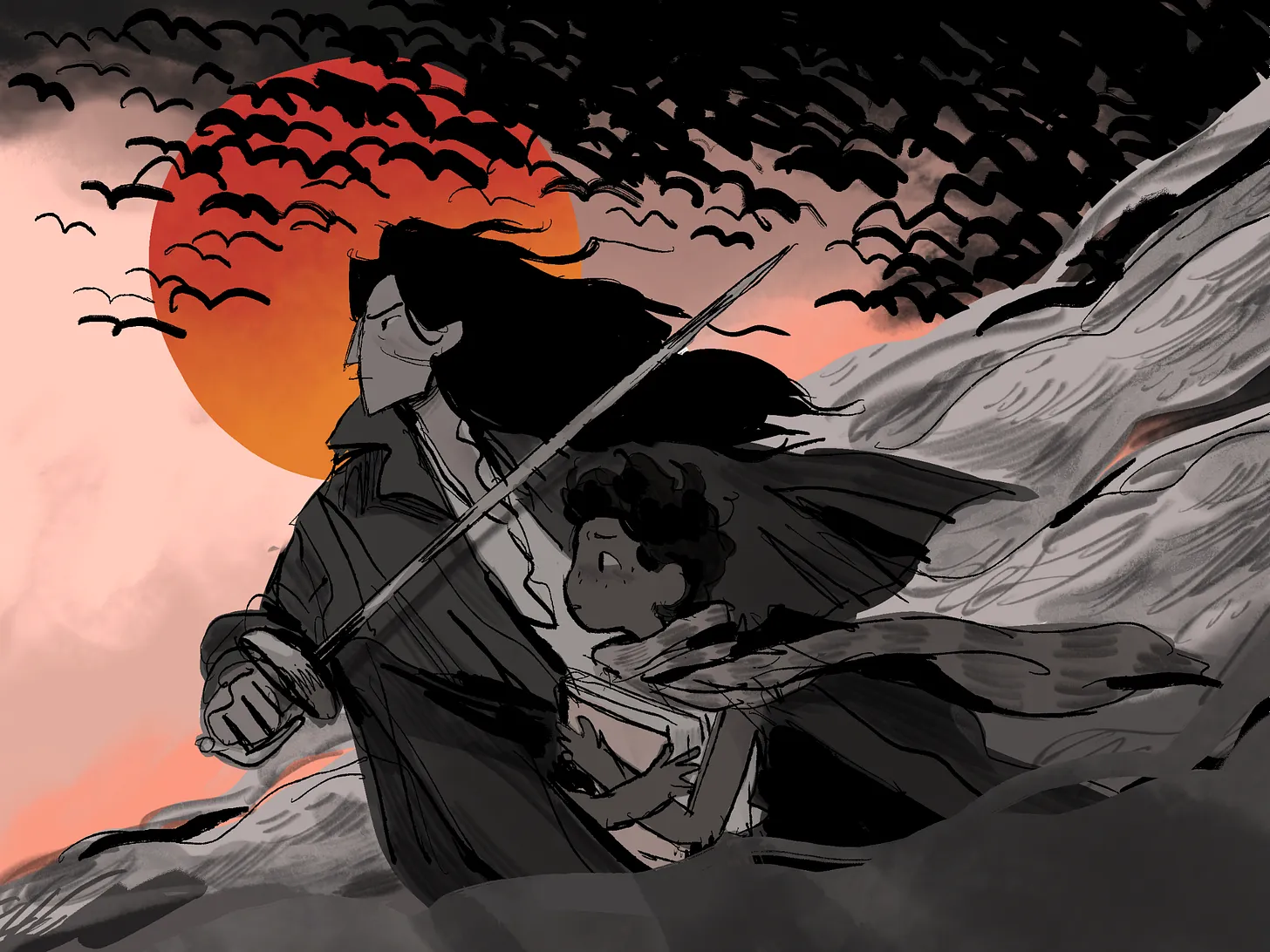
“It’s a two-book collection, and if truth be told an excessively previous tale for me,” Stevenson says. “When I used to be a child I began penning this novel, I used to be most definitely 12 on the time once I first had the theory, then I learn Christopher Paolini’s Eragon. He was once a homeschooler who revealed a ebook, and I used to be homeschooled, so I used to be like ‘I will be able to do that! I will be able to do it higher!’ so I set the function for myself that I used to be going to complete it by the point I used to be 15. I did, and it was once a 600 web page monster.”
We communicate in regards to the nostalgia of returning to adolescence tales but additionally no longer in need of to unearth a prior interest that would possibly no longer have the lifestyles left in it you’d was hoping. For Stevenson, that was once a slew of pirate characters who’ve steadily been coming to lifestyles on-line in image shape, however now we now have a coarse concept of precisely what narrative they’re going to come to be part of.
“I left for varsity, and it ended up being this .zip document on my laptop for the longest time, and I used to be afraid to learn it as a result of I liked it such a lot,” Stevenson recollects. “However She-Ra had ended proper sooner than lockdown. So no longer handiest was once I caught at house always, essentially the most in depth task I’d ever had simply ended, and I actually had not anything to do for the primary time in my lifestyles.”
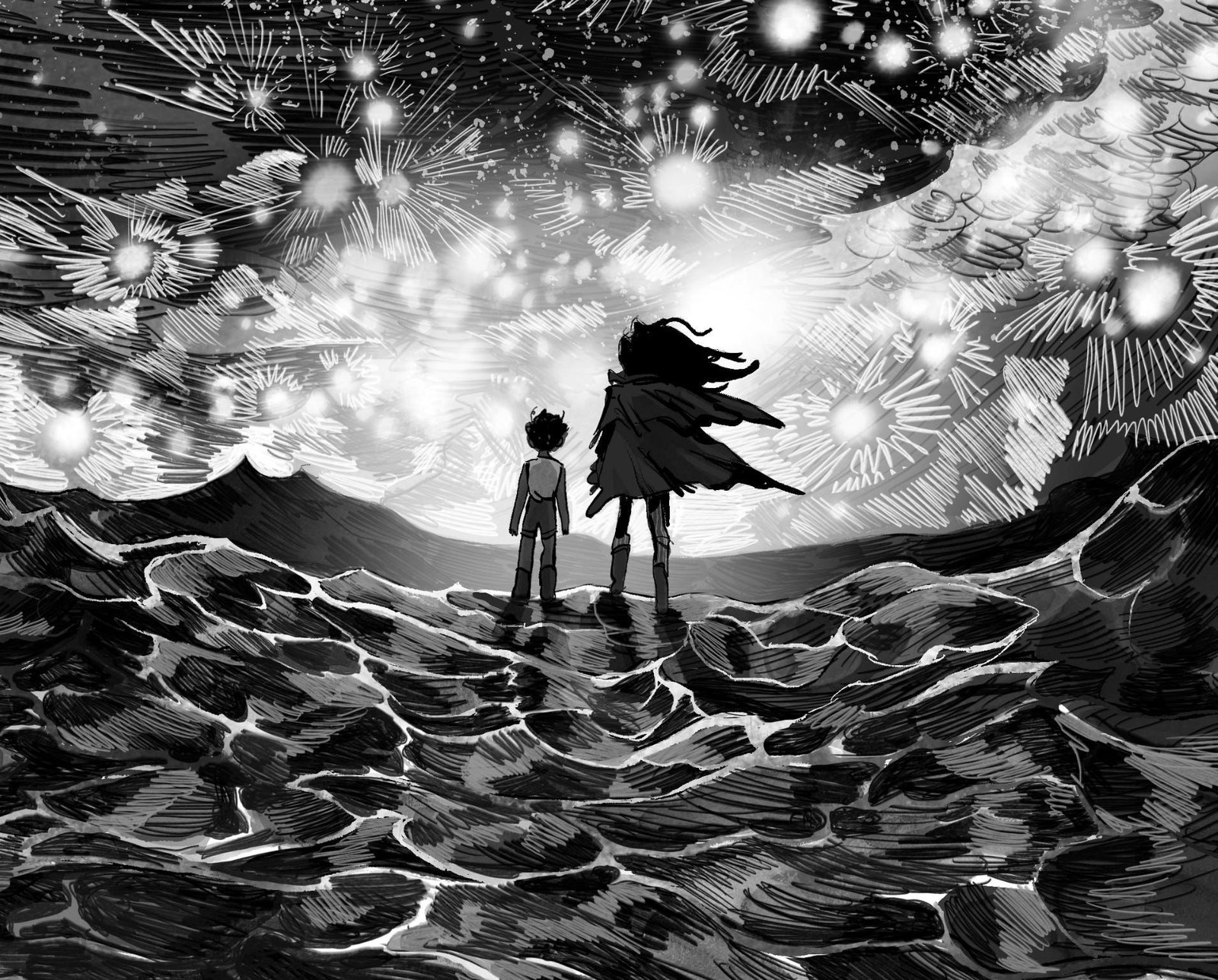
She-Ra and the Princesses of Energy’s ultimate season on Netflix coinciding with covid supposed there was once no “remaining ritual” for a mission that Stevenson spent years of his lifestyles on as showrunner. Apart from sneaking over a couple of workforce participants to percentage beverages and watch the finale, they discovered themselves with a void that abruptly proved laborious to fill.
Stevenson continues: “So I in any case opened that .zip document and I didn’t hate it. I simply began going again into it and looking for the ones characters once more, and my agent came upon since they came upon about the whole thing. I’ll be turning the ones 600 pages into two books. They’ll be illustrated, and it’s been one thing I’ve been running on that’s grow to be a large interest mission. I haven’t mentioned it a lot as it seems like I’m no longer rather in a position to percentage it but. I nonetheless wish to determine precisely what it’s, however it’s there now, and I’m in any case about to do it. It’s simply two decades of my lifestyles, so no large deal!”
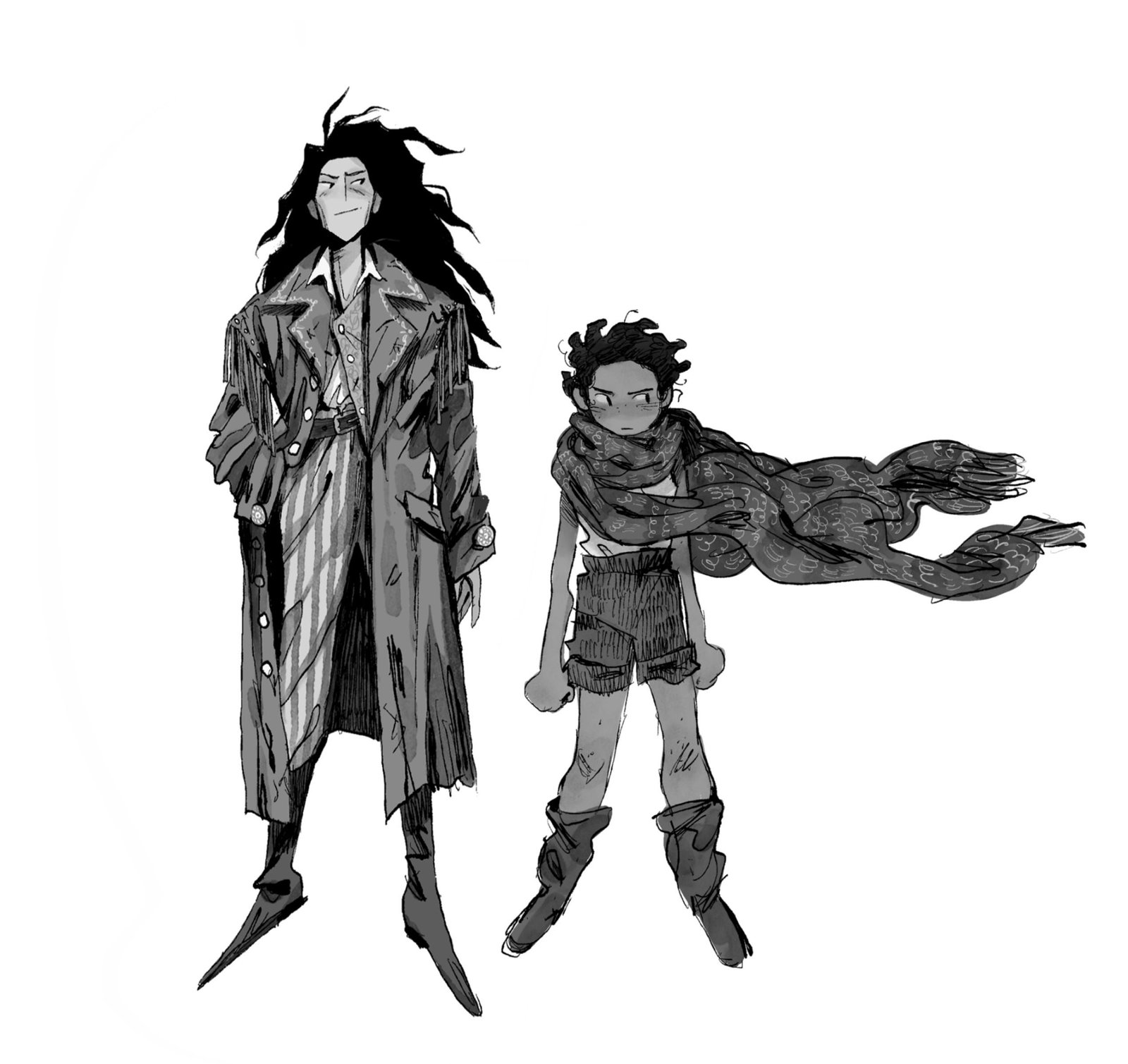
Stevenson and Ostertag are recognized for sharing inclined portions of who they’re thru their revealed graphic novels and equivalent paintings, however even this feels rather alien. “I simply have to check out the whole thing,” Stevenson admits. “It’s grow to be this dialog through the years with me and my more youthful self as it’s any such difficult ebook and I’m like, ‘You little b***h! Why didn’t you write an overview? The place are you going with this? What does it imply?’”
Referring to their upcoming initiatives brings us again to the subject of previous, provide, and long run queer illustration throughout all media, and the place we predict and hope for tales like this to head within the future years. It’s a tricky query with out a immediately (sorry) solution, however incessantly there may be such a lot to be told just by taking a look again at characters and tales who, by hook or by crook, have all the time been queer.
“We’ve all the time been right here, our tales have all the time been instructed, a technique or some other,” Ostertag says. “There was once by no means a time when our tales weren’t being instructed, as a result of queer persons are the artists, we’re the tradition makers. We’re the ones making the tradition and surroundings the tone and difficult society and the paintings that we make is the paintings that sticks round. To grasp that, whilst you take a look at the historical past of artwork, it’s also the historical past of queerness, which has been making me actually emotional as a result of we’re residing thru our personal bizarre time and seeing a large number of transphobia and homophobia within the States, but additionally this little golden age of queer illustration on TV, and we’re seeing the response to that as neatly.”
“Persons are afraid at the moment,” Stevenson says. “We’ve ended up in a spot at the moment the place other folks really feel like they have got no keep an eye on, and partially some way of coping with this is going ‘those are the unhealthy guys and those are the great guys’ however as any person who’s queer or has queer pals will let you know, there isn’t a global the place everyone seems to be making the suitable selections always.”
Ostertag touches on characters like Sherlock Holmes and John Watson or Frodo and Sam from The Lord of the Rings and the way, intentional or no longer, there’s a queer subtext to be observed in such a lot of works throughout historical past that experience all the time represented our thirst for range and want to be observed for who we’re. Better illustration within the mainstream shouldn’t take what this implies away, as a result of LGBTQ+ other folks have existed for all of recorded historical past.
“To seem again and notice when there have been exact regulations penalising this stuff, and seeing how other folks proceed to are living and thrive and realising that we’ve all the time been right here. It’s for my part giving me so much, after which there’s this inspiration that I’m looking to channel right into a ebook that’s like, that dialog between the previous and the prevailing.”
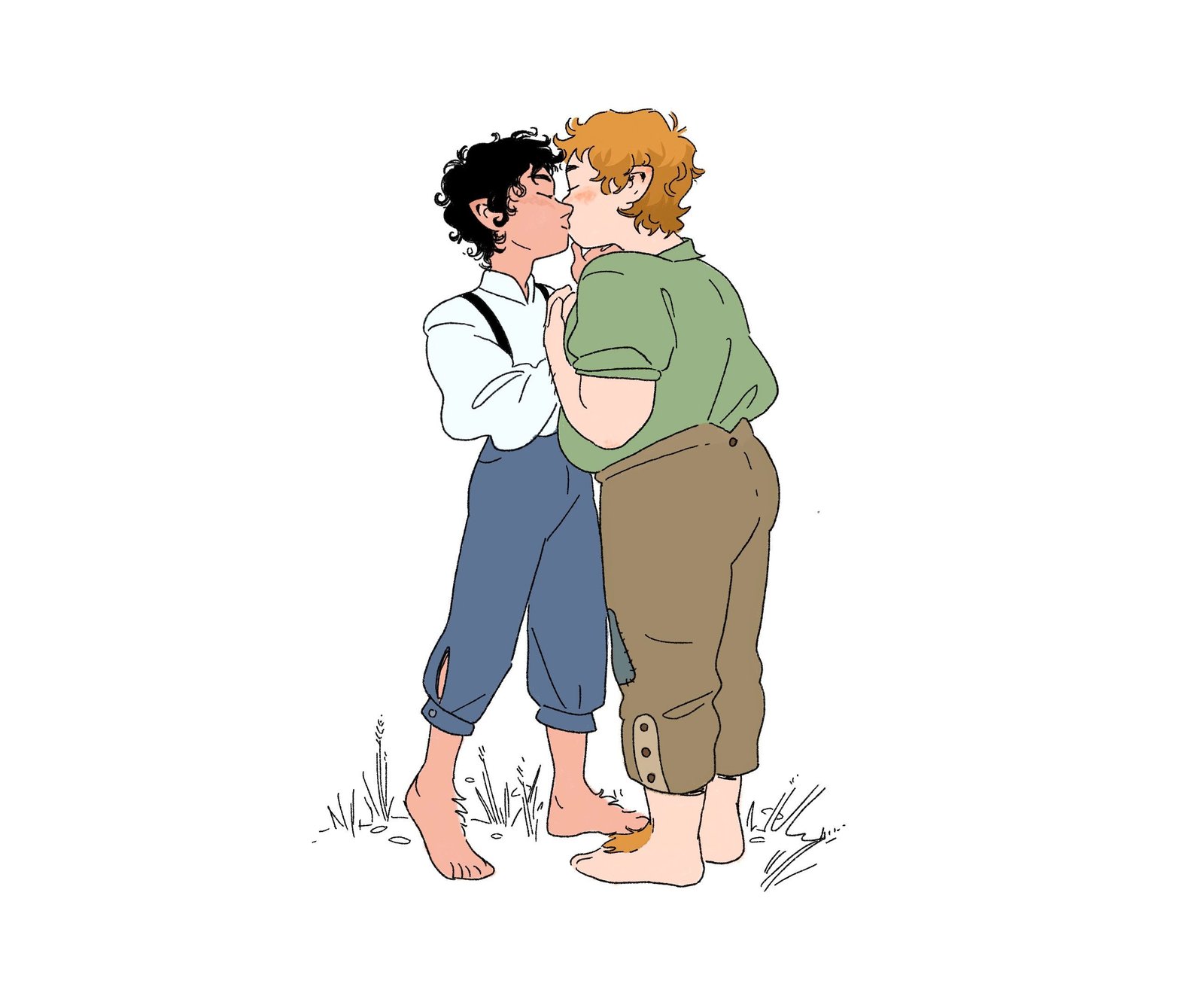
Queer other folks additionally love, and incessantly have a duty, to riot, even supposing that comes simply from reframing tales we grew up with to serve queer issues and characters. It’s a passion of Stevenson and Ostertag that has prolonged to taking journeys around the globe to discuss with ancient museums or gushing about tacky motion motion pictures in combination at house. It ties into how queer illustration was once regularly one thing we needed to glean thru subtext, ignoring harsh stereotypes and discrimination to seek out even a morsel of self within the media we eat.
“It’s amusing to peer any individual like Herman Melville, who was once very queer, and wrote tragic and really attractive letters to Nathaniel Hawthorne,” Ostertag issues out. “Or Moby-Dick, which has additionally held up as this masculine white guy novel and simply be like, ‘No, he’s one among ours, we’re taking him. We’re taking this. We’re taking that. It’s no longer yours anymore’. There’s an influence additionally in no longer surroundings myself up in opposition to those energy constructions, however extra like, ‘I’ll take your entire highest guys’.”
There’s additionally a refusal to recognise inherent queerness particularly characters and tales, afraid to seem inclined or vulnerable by means of bold to want affection or display part of your self that dangers straying too some distance from societal heteronormativity. It’s about shedding keep an eye on of what we’ve conditioned love, relationships, and closeness to be. Queerness has, for hundreds of years, been looking to uproot this established order.
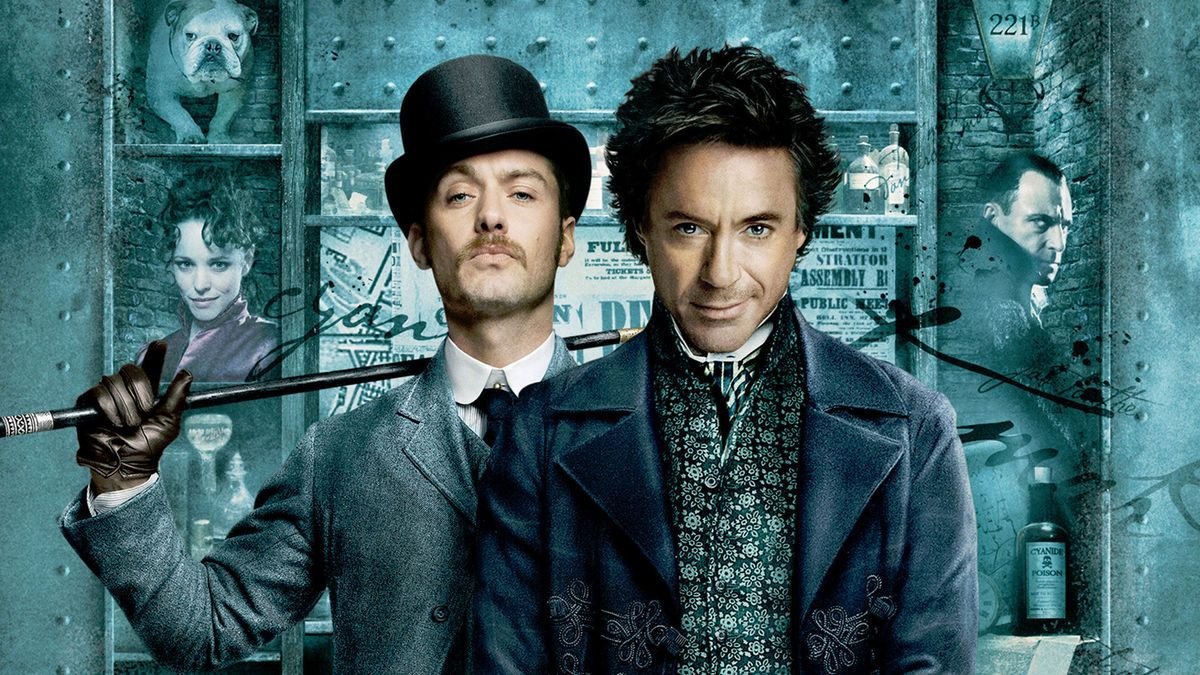
“It’s a must to get started realising that those tales are queer, had been all the time queer, had been made by means of queer other folks,” Stevenson notes. “I feel it’s coming from a equivalent approach of attempting to find intimacy, however there’s all the time this believable deniability of those large feelings and that you simply’d have to seem within the face of that being a homosexual tale. However persons are simply no longer in a position for that, in their very own lives.”
Ostertag chimes in by means of including that, “it’s basically radical to seem again at that stuff, the ones issues which can be observed because the pillars of white supremacy or the patriarchy and to knock the pillars out and be like, ‘No, you don’t get to have that. Anything else this is just right could also be queer, if truth be told’.”
Stevenson briefly circles again to The Lord of the Rings, and the way it is going towards masculine perceptions of emotional and bodily loss that males are infrequently keen to precise, however throughout the context of queerness, it may be made so a lot more robust. “It’s so impressed by means of the trauma of battle, of being a soldier and looking at the folk you like essentially the most die round you. There’s a fantastic center of affection and grief and loss and, particularly for a large number of males, that’s the largest love you’ll really feel, this brothers in hands factor. And so the second one you’re like, ‘yeah however there we homosexual squaddies too?’ as a result of that feeling, this intimacy, death is the one approach you’ll believe getting it.
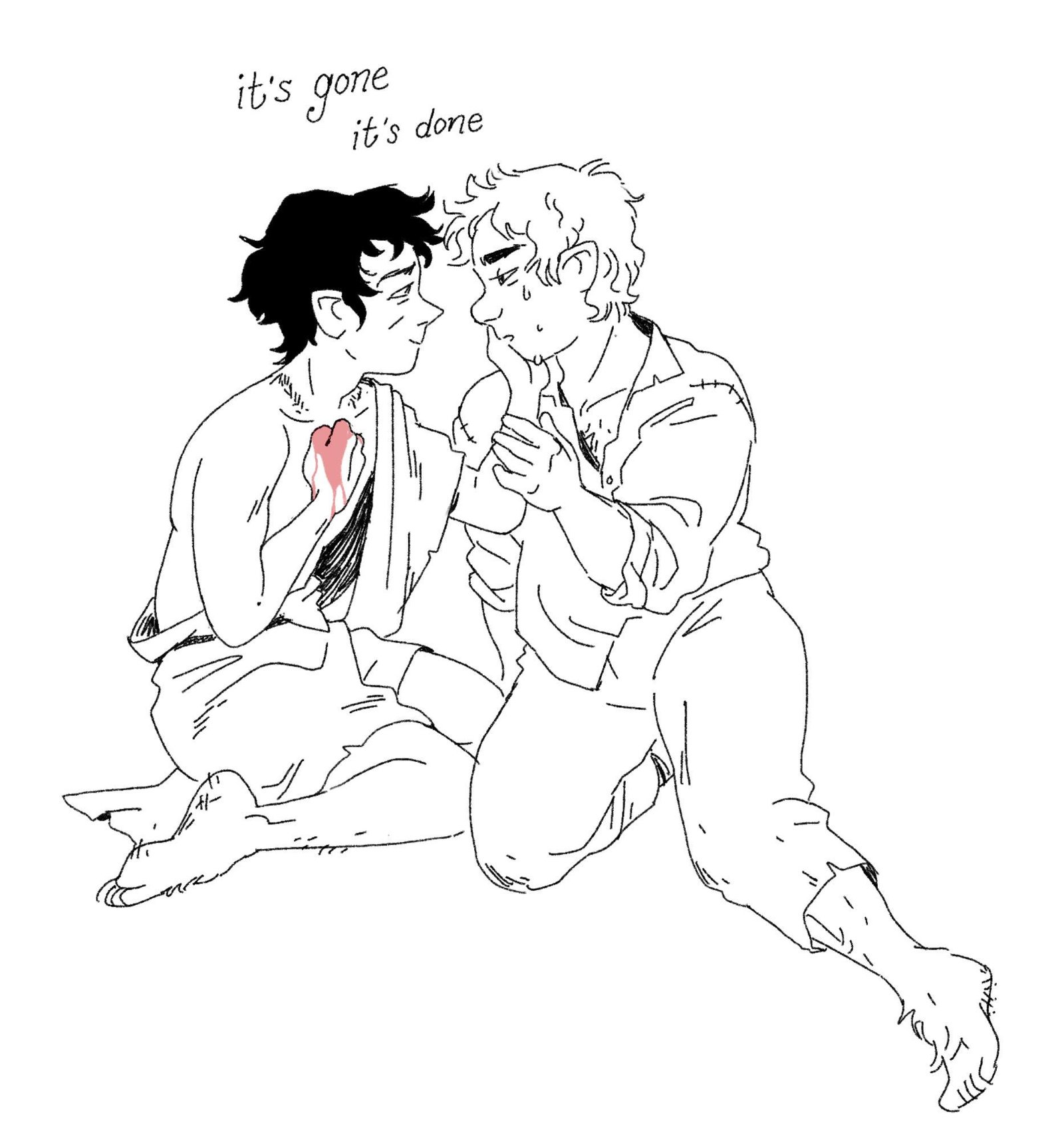
“It’s no longer homosexual if I cradle him whilst he’s death. The ones feelings aren’t at odds with each and every different, the ones feelings aren’t even fully separate issues. Sure, there must be extra intimacy between immediately males as neatly, and also you shouldn’t must die to get it. However that’s no longer what we now have, that’s no longer the arena we are living in. I feel there’s an enormous flinching clear of the concept queerness may just even exist in the ones tales.”
We will be able to’t transfer queer illustration ahead with out making errors or taking a look again at the previous, however once in a while we’re too afraid as a collective to take this step, or rely on tales to learn by means of companies who exist in perpetual concern of being cancelled or by no means toeing the road sufficient. It’s a dialog we wish to have with each ourselves and the broader international, and is likely one of the remaining testaments of my time with the 2 creators.
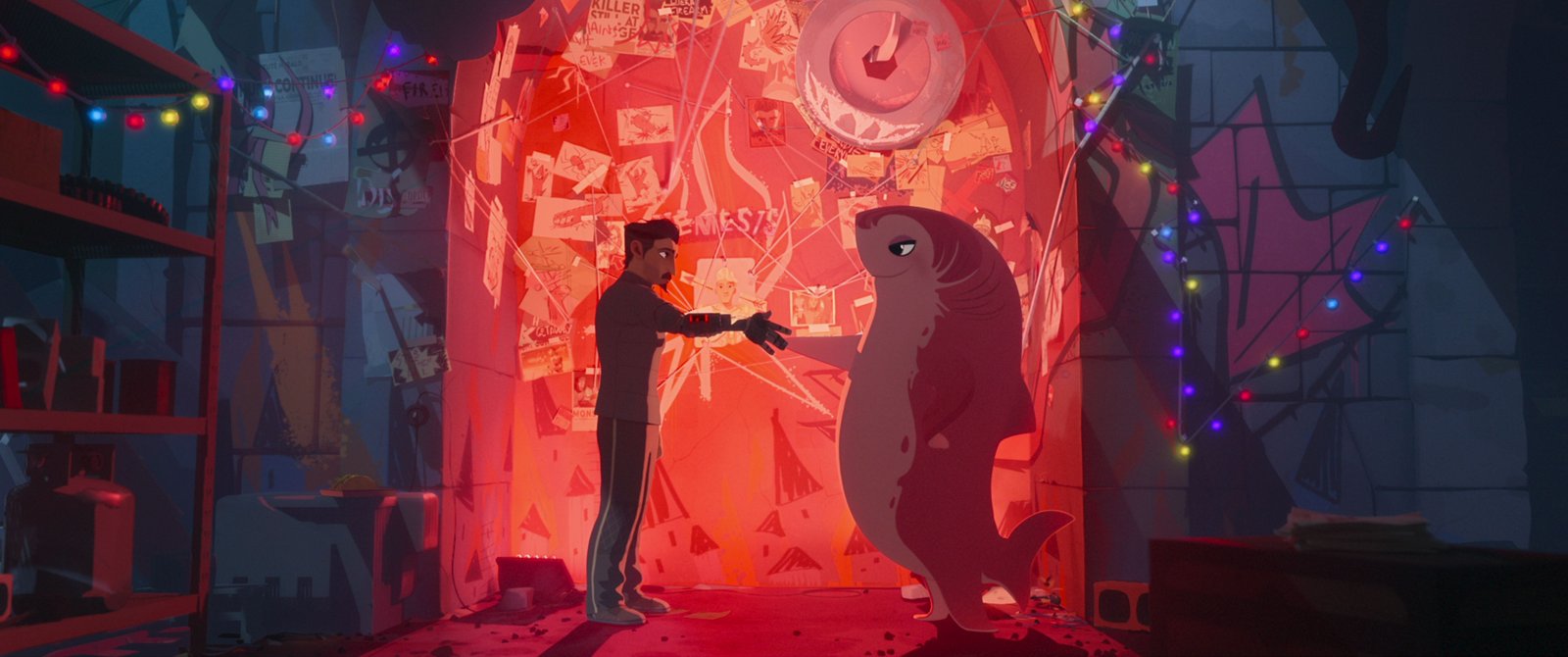
“We’re residing in such an considerable time for queer media, however persons are nonetheless, particularly within the larger stuff made by means of primary corporations, are afraid of having it improper,” Ostertag says. “Fearful of a response or being problematic. We’re all afraid, however that’s why I like each the Man Ritchie [Sherlock Holmes] movies, as a result of this can be a poisonous courting, and so they is also in love, however they’re each actually unhealthy other folks, and so they’re no longer just right for each and every different. There’s something about this this is so thrilling to me as a result of they’re unhealthy in in particular queer techniques. If it was once textual, on the time, it might should be so much softer and sweeter and there is part of my soul which actually responds to studying the ones a lot more complicated, tragic, poisonous tales that persons are actually scared to inform at the moment. I’m scared to inform them, and I’m looking to unlearn that concern.”
Audiences can hesitate to interact with textually queer tales leaning into imperfect rep too, both because of disregarding such tales as problematic or unwilling to interact with poisonous queer characters in media the place some audiences be expecting us to be painted as immaculate, to steer clear of offense or confusion, or else be labelled as destructive illustration extra destructive than useful.
“Persons are afraid at the moment,” Stevenson says. “We’ve ended up in a spot at the moment the place other folks really feel like they have got no keep an eye on, and partially some way of coping with this is going ‘those are the unhealthy guys and those are the great guys’ however as any person who’s queer or has queer pals will let you know, there isn’t a global the place everyone seems to be making the suitable selections always. Like I do know only a few comfortable queers, and the conversations we now have with each and every different aren’t ones that couldn’t be put into the presentations that we make, as a result of we’re bizarre as f**ok! We will be able to’t be comfortable.”
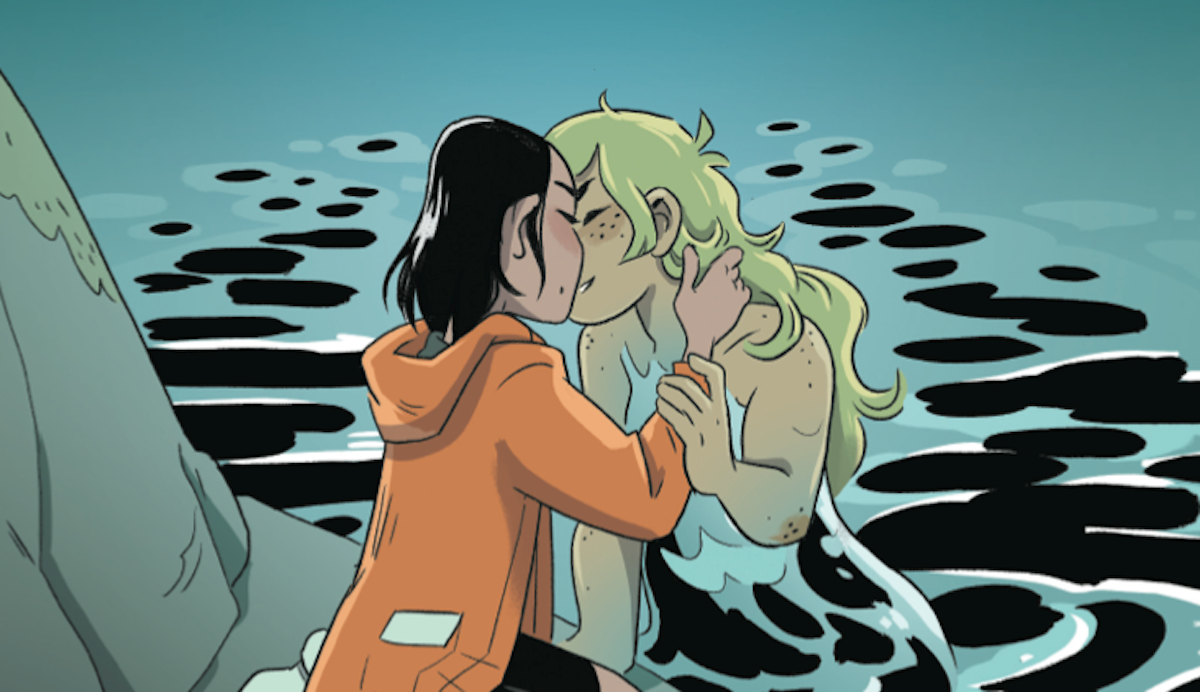
Whilst the way forward for queer illustration and the rights we stay preventing for stay unclear, it kind of feels Stevenson and Ostertag are in the long run hopeful about what’s to return, and plenty of new creators rising up in a fraught however inspirational panorama for storytelling. “I need extra poly tales, platonic love, hook-up love, and the type of reports all of us percentage, however are more or less afraid to turn to immediately, cis other folks. I need that so badly, and I’m attempting in my very own approach to do it however it’s very frightening, but if one thing is horrifying you must pass down that street,” Ostertag tells me.
Stevenson is similarly passionate in terms of drawing near tales we eat and inform from a spot of unlearning, one thing queer persons are compelled to do each and every and each day. “Within the historical past of storytelling, even having our entire lifestyles and our entire buddy crew and most people we have interaction with every day being queer and trans, all of us nonetheless grew up with those self same tales and we need to determine tips on how to unlearn positive issues too. We’ve to check out and expand our imaginations to what’s imaginable as a result of I feel we’re constrained by means of that as neatly.
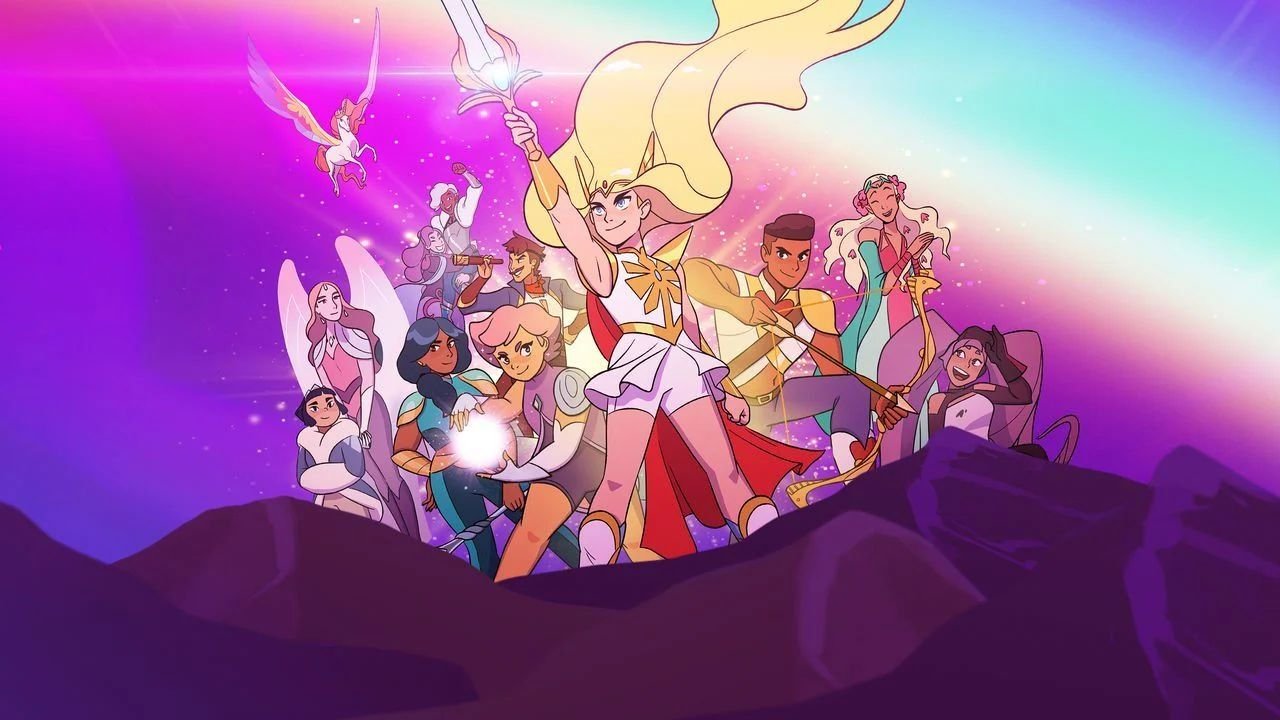
“We speak about this always as a result of we’re additionally looking to push ourselves, to push each and every different to head farther and determine what’s imaginable and what we will be able to do. However we’re no longer going to be the individuals who have the last word, that’s the individuals who take it and run so far as we will be able to cross it.”
Whether or not you’re broadening your horizons by means of imagining a personality with a special gender to really feel extra observed for who you might be, or interrogating the interior cop or government policing tales to your thoughts, queer illustration is all about wondering ingrained tropes and practices whilst opening the neighborhood as much as voices from each stroll of lifestyles possible.
Subsequent: If We Need Extra Grownup Animation, We Want To Beef up It